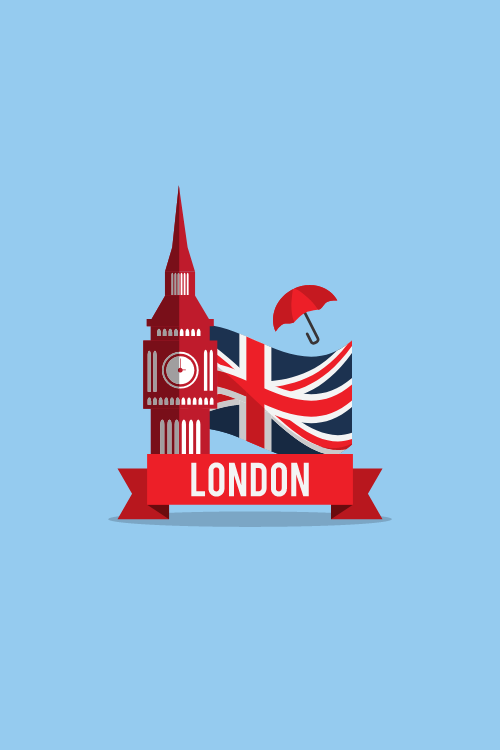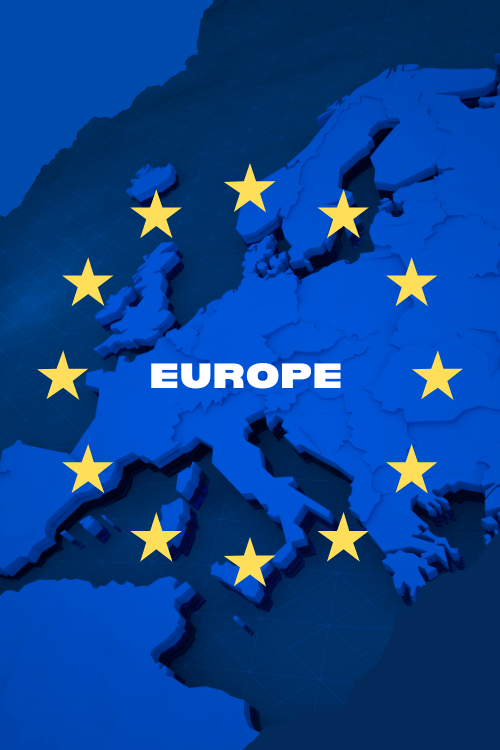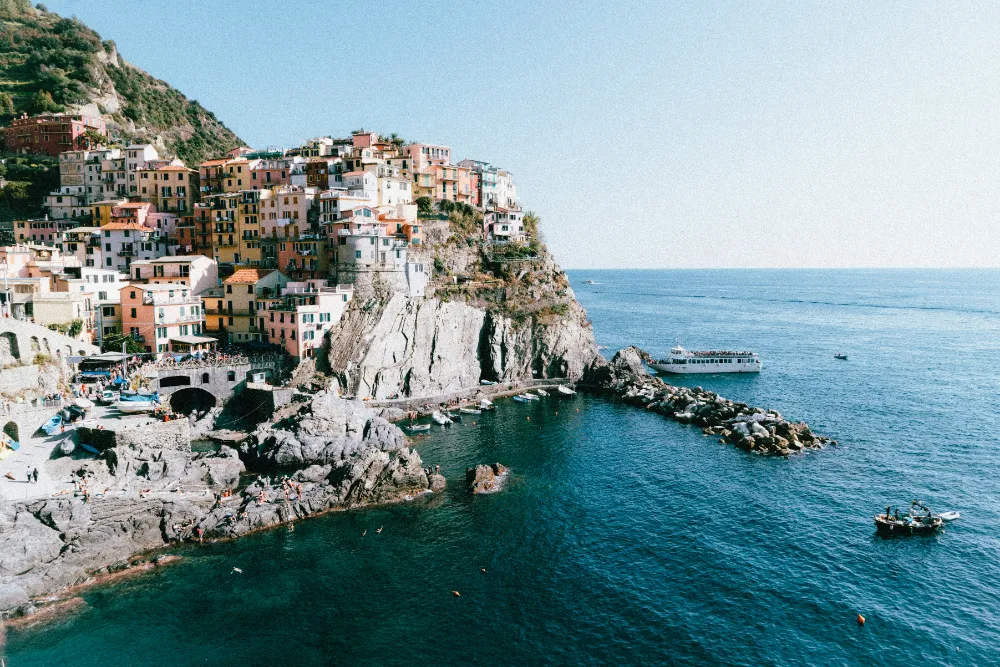Travel Guide
Best European Countries to Visit in February: Your Ultimate Guide
February in Europe. Maybe you picture grey skies and biting cold? Think again! While summer gets all the hype, February offers a unique charm you won’t find any other time. Imagine fewer crowds at famous landmarks, a cozy atmosphere in cafes, and often, lower prices for flights and places to stay.
It’s a chance to see Europe breathe a little differently. You can hit world-class ski slopes, chase the winter sun, dive into vibrant festivals, or witness incredible natural light shows. This guide will help you find your perfect February escape.
Let’s explore some amazing options based on what you love to do.
Crave Snowy Adventures? Head for the Hills
If strapping on skis or a snowboard sounds like your ideal vacation, February is prime time in Europe’s mountains.
- The Alps (Switzerland, Austria, France): These are the big hitters for a reason. Think world-class resorts, stunning scenery, and charming alpine villages. Places like Zermatt (Switzerland) or Chamonix (France) offer incredible experiences. You get reliable snow and vast ski areas. It’s the classic European winter dream.
- Slovakia (Jasná): Want amazing skiing without the Alpine price tag? Jasná in Slovakia is a fantastic, more budget-friendly alternative. You still get great slopes and modern lifts, but your wallet will thank you.
These spots are popular in February, especially during school holidays, so booking ahead is smart. But the crisp mountain air and powdery snow are worth it!
Need Some Sunshine? Go South!
Tired of winter’s chill? Southern Europe offers a welcome dose of vitamin D in February. While it might not be full-on beach weather everywhere, it’s often pleasantly mild and sunny compared to the north.
- Southern Spain (Andalucia & Canary Islands): Andalucia (think Seville, Malaga, Granada) offers culture, history, and daytime temperatures that can be surprisingly comfortable (often 10-18°C / 50-64°F). The Canary Islands are even warmer – a true subtropical escape often called the “Hawaii of Europe.” Perfect if you’re really chasing warmth.
- Portugal (Madeira & Algarve): Madeira island is famous for its year-round spring-like climate and beautiful hiking. The Algarve coast offers dramatic cliffs and beaches, much quieter than in summer. Lisbon and Porto also enjoy milder weather than many capital cities.
- Southern Italy & Greece (Sicily, Crete): These Mediterranean gems offer ancient history and delicious food, with a good chance of sunshine. Exploring ruins or wandering charming towns is much nicer without the summer heat and crowds.
Key Takeaway: Southern Europe provides a great escape from harsh winter weather in February.
Love a Good Party?
February is the month for Carnival (or Mardi Gras) in many parts of Europe. It’s a burst of color, music, and celebration before Lent begins.
- Venice, Italy: The most famous Carnival! Imagine gliding down canals surrounded by people in elaborate masks and historical costumes. It’s pure magic, but also very busy.
- Nice, France: Known for its huge parades featuring flower-covered floats and lively atmosphere on the French Riviera. It’s a bit warmer here too.
- Cologne, Germany: Offers massive street parties and parades with a unique German twist. Expect lots of costumes, music, and fun.
These festivals are incredibly popular, so plan well in advance if you want to join the fun.
Want to See Nature’s Magic?
For truly unique natural spectacles, head towards the Arctic Circle in February.
- Norway (Tromsø): This is one of the best places on earth to see the Northern Lights (Aurora Borealis). February’s long, dark nights give you a great chance to witness this breathtaking display. You can also try dog sledding or snowmobiling!
- Iceland: February is ideal for exploring Iceland’s stunning ice caves – they’re often only safely accessible in winter. Plus, you still have a good chance of catching the Northern Lights here too, perhaps even near Reykjavik.
These trips require warm clothing, but the payoff is experiencing things you simply can’t see anywhere else.
Travel Tip: “February means fewer tourists at major sites. I visited the Colosseum in Rome and practically had it to myself compared to summer. It felt much more special.” – Frequent Traveler Insight
Planning Your Trip: Staying Connected Without the Headache
Okay, you’ve picked a dream destination. Now, how will you share those amazing photos, navigate unfamiliar streets with GPS, or check opening times for that museum? Using your home phone plan abroad can lead to shockingly high roaming charges. You know, the kind of bill that ruins your post-vacation glow? It’s a common, frustrating problem.
Think about it: you land, excited to explore, but your phone is racking up charges every time it connects to data. Finding reliable Wi-Fi isn’t always easy or secure. Buying a local physical SIM card means finding a store, dealing with potential language barriers, and swapping out your tiny SIM (easy to lose!).
This is where eSIMs change the game.
What’s an eSIM and Why Should You Care?
An eSIM is basically a digital SIM card. Instead of a physical chip, the SIM information is embedded in your phone (most newer smartphones have this feature).
Here’s why this is helpful for your European trip:
- Avoid Roaming Charges: This is the big one. With an eSIM data plan for the country you’re visiting, you pay a fixed, often much lower price for mobile data. No surprise bills! This lets you use data freely for maps, translations, social media, and searching for local tips.
- Keep Your Home Number: On most dual-SIM phones (which support both a physical SIM and an eSIM), you can keep your regular SIM card active for receiving calls or texts from home (just be mindful of any charges your home carrier might impose for receiving calls abroad, though typically receiving texts is free) while using the eSIM for all your mobile data needs.
- Convenience: You can buy and install your eSIM before you even leave home. No hunting for a SIM card shop upon arrival. Just land, turn on your phone, and you’re connected. Installation is usually super simple – often just scanning a QR code or clicking a link.
- Flexibility: Traveling to multiple countries? You can often get regional eSIM plans (like one for all of Europe) or easily switch between country-specific plans without swapping physical cards.
eSIM vs. Physical SIM: A Quick Look
| Feature | eSIM | Physical SIM (Local) |
|---|---|---|
| Setup | Digital (QR code/link), often pre-trip | Requires finding store, swapping chip |
| Cost | Often very affordable prepaid data plans | Can be cheap, but involves initial hassle |
| Convenience | High (no swapping, immediate connection) | Lower (need to find/buy/install on arrival) |
| Flexibility | Easy to switch plans/regions digitally | Need new SIM for each country/region |
| Home Number | Can keep home SIM active (on dual SIM phones) | Requires swapping out home SIM |
| Compatibility | Requires newer, compatible phone | Works in almost any unlocked phone |
What does this mean for your trip?
Using an eSIM means less stress. You land, and your phone just works (many plans, like those from eSIM4.com, auto-connect on arrival). You can instantly look up directions to your hotel, message family back home that you arrived safely, or find the nearest great restaurant. You avoid the anxiety of unexpected charges and the hassle of finding local solutions. Your travel experience becomes smoother and more enjoyable.
Think about navigating Venice’s confusing streets or finding that hidden tapas bar in Seville – easy peasy with data on your phone. Sharing that stunning photo of the Northern Lights? Done in seconds.
Deeper Dives: Country Highlights for February
Let’s revisit some top picks and why they shine in February:
- Italy: Beyond Venice Carnival, Rome and Florence are less crowded, making museum visits more pleasant. Southern Italy offers milder weather for exploring ancient sites. It’s a romantic destination, especially around Valentine’s Day.
- Spain: Andalucia’s mild weather is a huge draw. The Canary Islands offer genuine warmth. Madrid’s world-class museums have shorter lines. Cádiz also hosts a vibrant Carnival if you prefer that over Venice.
- Portugal: Madeira’s hiking trails are lush. Lisbon and Porto offer culture without the summer swelter. The Algarve is peaceful. It’s generally a great value destination compared to some Western European neighbours. Find some travel inspiration and maybe even check data plans if you’re considering a trip further afield, perhaps comparing options like those for Peru to see how regional pricing can vary.
- France: Paris remains iconic (and potentially romantic!), while the South (Nice) has Carnival and mild weather. The Alps offer top-tier skiing. Don’t forget the unique Lemon Festival in Menton!
- Switzerland: It’s all about the Alps in winter! Skiing, snowboarding, or just enjoying the snowy landscapes from a scenic train ride. Cities like Zurich offer urban comforts alongside mountain access.
- Norway & Iceland: February is peak season for Northern Lights and unique winter activities like ice caves (Iceland) or dog sledding (Norway). It’s cold, but the experiences are unforgettable.
Keep in Mind: While crowds are generally lower in February, popular Carnival cities (Venice, Cologne, Nice) and ski resorts (especially during school breaks) will be busy and potentially more expensive during specific dates.
What’s the Weather Like?
Europe’s weather in February varies a LOT. Here’s a rough idea:
| Region | General Feel | Examples | Avg. Temp Range (Approx.) |
|---|---|---|---|
| Northern Europe | Cold, often snowy | Norway, Sweden, Finland | -6°C to 0°C (21°F to 32°F) |
| Alps | Cold, snowy peaks | Switzerland, Austria, France | -5°C to 5°C (23°F to 41°F) |
| Central Europe | Cold, maybe snow/rain | Prague, Budapest, Berlin | -2°C to 4°C (28°F to 39°F) |
| Western Europe | Cool, often damp/rainy | Paris, London, Amsterdam | 2°C to 8°C (36°F to 46°F) |
| Southern Europe | Mild, some sunshine | Spain, Portugal, S. Italy | 7°C to 16°C (45°F to 61°F) |
| Atlantic Isles | Pleasantly warm | Canary Islands, Madeira | 15°C to 20°C (59°F to 68°F) |
Pack smart! Layers are always your friend in Europe, especially in February. Waterproof outer layers are wise for Western and Central Europe. Bring proper cold-weather gear if heading North or to the Alps.
Travel Cheaper: February Budget Tips
One of the best reasons to travel in February is the potential savings!
- Fly Smart: Flights are often cheaper than in peak season. Be flexible with dates if you can.
- Stay Savvy: Accommodation prices tend to dip. Look outside major city centers or consider apartments.
- Choose Wisely: Eastern European countries (like Hungary, Czech Republic, Slovakia) or Portugal generally offer lower costs than places like Switzerland or France. The Netherlands can also be surprisingly budget-friendly.
- Book Ahead (Sometimes): While generally quieter, book popular Carnival spots or ski resorts well in advance. For other places, you might find good last-minute deals.
- Eat Local: Avoid tourist traps near major sights. Eat where locals do – often better food for less money.
- Use Public Transport: Europe’s train and bus networks are excellent and usually cheaper than taxis.
- Stay Connected Affordably: Use an eSIM for data! Avoid those terrifying roaming charges. Companies like eSIM4.com offer plans for over 200 countries, often with simple setup via QR code and helpful 24/7 support if you need it. Their app can also help manage data, top up, or even add international calling/texting if needed. Check out their general site at https://www.esim4.com/ for options.
You can absolutely have an amazing European adventure in February without spending a fortune.
Your Perfect February Trip Awaits
So, is February a good time to visit Europe? Absolutely! It offers a different, often more authentic, and potentially more affordable experience than the busy summer months.
Whether you dream of snowy slopes, sunny coastlines, vibrant festivals, or magical light shows, there’s a perfect spot waiting for you.
- For Snow: Switzerland, Austria, France, Slovakia.
- For Sun: Southern Spain, Portugal, Canary Islands, Southern Italy, Greece.
- For Culture/Festivals: Venice, Nice, Cologne.
- For Nature’s Wonders: Norway, Iceland.
- For Romance: Prague, Venice, Paris.
- For Budget Travel: Portugal, Hungary, Netherlands, Slovakia.
The key is to match the destination to your desires. Embrace the unique atmosphere, pack accordingly, and sort out your connectivity beforehand with an eSIM to make your journey smooth and stress-free.







